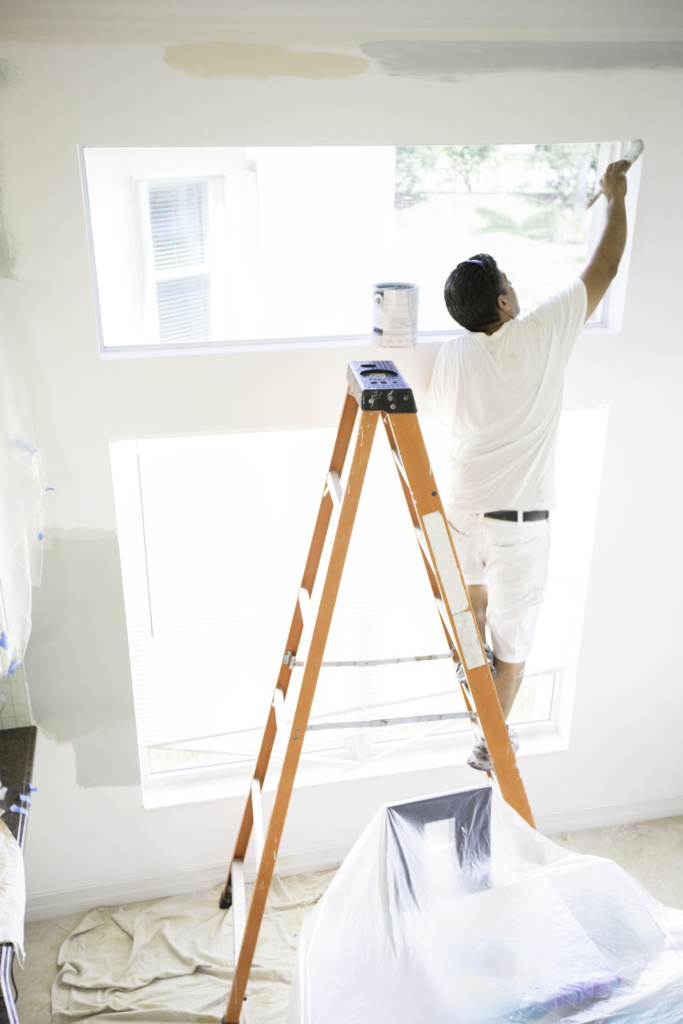Autumn is a good time to brush up on crew safety tips for indoor work
 Interior work in the colder months minimizes safety dangers like working on tall ladders and battling high heat. But as crews transition indoors this time of year, there are other safety factors to keep in mind.
Interior work in the colder months minimizes safety dangers like working on tall ladders and battling high heat. But as crews transition indoors this time of year, there are other safety factors to keep in mind.
The risk for injury in the field is still high. Injury rates are 71% higher in construction, overall, compared to all other industries, according to the National Institutes of Health. Here are some tips to help keep your crews safe as they tackle more interior work.
PPE
During the summer, there was concern over crews shedding too many layers due to thermal stress, which could bring a potential exposure to harmful fumes and chemicals. Indoors, it’s a slightly different game. You need to focus on keeping areas properly ventilated and encourage crews to wear proper PPE.
JoAnn Dankert, senior safety consultant for the National Safety Council, lists the following protective essentials for any paint pro for all environments:
- Respirators
- Hand protection (gloves)
- Arm protection (sleeves)
- Body protection (Tyvek suits)
- Eye protection (safety glasses/goggles or face shields)
It’s important to make sure respirators fit properly, too. You can tap a manufacturer or a training expert for help. Education on types of contaminants and exposures is important as well. Even dust particles can be a problem for some who might be sensitive to them, said Matt Kunz, president of Five Star Painting.
“When sanding, many of the products used for repairs inside homes create dust that is very fine and should not be inhaled by the workers,” he noted, “so using good PPE (personal protection equipment) is a recommended practice for anyone that might be exposed to dust.”
Dry times, confined spaces
Kunz also says dry times may be extended indoors. With that, pay attention to lingering fumes, and talk to customers about staying out of areas with wet paint, particularly children who may want to touch it. You can also use fans to create a natural draft through opened windows to better ventilate, and potentially speed along, drying.
Confined spaces are another danger zone indoors, according to Dankert. “Another risk is fire or explosion due to the flammable vapors emanating off of materials being used in a confined space. Follow all of OSHA’s requirements for confined-spaces,” she emphasized.
Reaching, lifting, repetitive motions
When working outside, there are often concerns about pros stretching and reaching on ladders, a potential fall hazard. Those same rules of caution apply indoors on shorter ladders and in smaller spaces. Proper form when lifting heavy objects is also important, and be careful with thrusting anything above the shoulders.
Even repetitive motions like rolling, spraying or sanding can lead to injuries over time. They may not seem like much now, Dankert says, but they can be a problem in the future if you don’t vary up your activities. “These soft-tissue injuries accumulate and eventually can make everyday tasks difficult to do,” she said.
Storage for tools and coatings
Wherever a paint pro works throughout the day, there should be appropriate storage for tools and coatings, both Dankert and Kunz say. Vehicles without appropriate storage for flammable coatings can be particularly hazardous, as unsecured containers could jostle and spill in a truck bed or van. Crews should also have procedures in place for storing and working with coatings and tools on the site and in a shop. Kunz also encourages teams to keep tools in their correct storage stations when not in use.
“Extension poles, spray hoses and drop cloths can create dangerous situations if left where they can be tripped over,” he said. “We keep careful account of open or empty paint/material cans, open or empty solvent/thinner cans, paper and masking materials that get underfoot, as well as rags—especially used ones where oil-based products were used—to avoid fire hazards.”
More articles on jobsite safety can be found at inpaintmag.com


